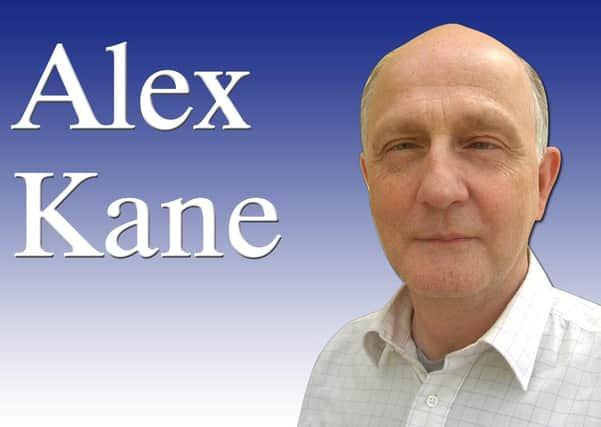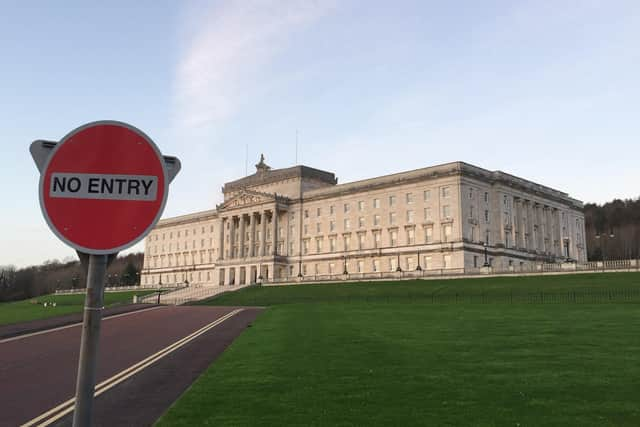Alex Kane: Voluntary coalition looks as far away now as ever


What we understand as mandatory coalition was originally described as ‘entrenched government’ (The Future of Northern Ireland, A Paper for Discussion, NIO 1972): ‘...certain minority elements must by constitutional requirement be included in a government. This course could present very difficult problems of definition, and impede the development of non-sectarian party structures.’
A few months later (NI Constitutional Proposals, Presented to Parliament in March 1973) the government confirmed a position – power-sharing – which hasn’t changed in almost 50 years: ‘...it is the view of the Government that the Executive itself can no longer be solely based upon any single party, if that party draws its support and its elected representation virtually entirely from only one section of a divided community. The Executive must be composed of persons who are prepared to work together by peaceful means for the benefit of the community.’
Advertisement
Hide AdAdvertisement
Hide AdIt tends to be forgotten by many in the nationalist community that Brian Faulkner persuaded the governing body of the UUP to give a ‘qualified welcome’ to the principle of power-sharing set out in the March ‘White Paper’, even though it led to the resignation of Bill Craig, who then formed the Vanguard Party and fielded candidates against the UUP in the election to the new Assembly a few months later.


The Sunningdale Agreement – the first attempt to construct a power-sharing Executive – failed (although it might have fared better and given Faulkner more room for manoeuvre had the SDLP not insisted on a Council of Ireland at that point). Interestingly, in September 1975, at a meeting of the United Ulster Unionist Council delegation in the new Constitutional Convention (a glorified party-political conference to find a replacement for Sunningdale), Craig advocated a ‘voluntary coalition’, including the SDLP. He insisted it wasn’t mandatory power-sharing, yet still ended up as the only vote in favour from the UUUC’s membership of 47.
The 1998 Belfast Agreement retained mandatory power-sharing as the cornerstone of Executive formation: indeed, there was some hope that opening the doors to as many parties as possible would, in time, allow for the building of trust, the entrenching of genuine cooperation and even encourage the development of new non-sectarian party structures. None of that has happened, although recent electoral evidence suggests that Alliance is expanding its middle-ground base.
Another problem is that the DUP and Sinn Fein deployed both the St Andrews negotiations in October 2006, as well as a number of other crisis negotiations since then, to build internal structures which, in essence, created two governments in the same Executive. It is the consequent serial, brutal, confidence-seeping dysfunction which has brought the mandatory aspect of the Executive under the spotlight. The dysfunction, of course, is not new, but the naked hostility and monumental disagreement which has marked the response to Covid-19 has resulted in huge levels of public anger, even contempt.
Advertisement
Hide AdAdvertisement
Hide AdSo, is voluntary coalition the solution? It depends what you mean by voluntary. If all it means is that a group of parties, representing more than half the MLAs (46+), cobble together the necessary votes after the next election, then they form the Executive and take responsibility for the Programme for Government (a process which could take months). On the present Assembly mathematics that would allow Sinn Fein, SDLP, Alliance, Greens and People Before Profit to form a government. Not one unionist party or MLA would be required.
That’s not going to work: not least because the unionist block (by way of Petition of Concern and cross-community voting procedures/vetoes – which cannot be changed without their support, anyway) would be able to bring to a standstill almost anything they chose to. There would probably be an effort to bring the UUP into the coalition, but it would take a very courageous leader to accept that offer. Similarly, any attempt to strand Sinn Fein outside a voluntary coalition would also lead to it deploying the various blocking mechanisms available to it: assuming of course, it didn’t simply walk from the Assembly entirely.
The real difference between voluntary and mandatory coalition is that mandatory doesn’t actually require trust and civility between the key players in unionism and nationalism – the DUP and Sinn Fein. But the very act of being prepared to do something voluntarily implies trust and civility is central to the motivations of the parties concerned.
It is assumed that the smaller parties, particularly the UUP and SDLP, are more willing to build on trust, yet it has to be remembered that the relationship between them from 1998-2003 wasn’t always a bed of roses. And in January, neither of them chose to return to the Opposition role they were carving out before the Assembly collapsed three years earlier.
Advertisement
Hide AdAdvertisement
Hide AdAlso, what would happen if, after the next election, the DUP and Sinn Fein – likely with 46+ between them – cut their own deal (as they did in 2007, 2011, 2016) and described it as a ‘voluntary’ agreement? Would you put it past them? And nor would I put it past the UUP, SDLP and Alliance to join them.
Cut the cookie and mathematics anyway you like, the fact remains that a voluntary coalition – in the sense that voluntary is usually understood – won’t been happening here.